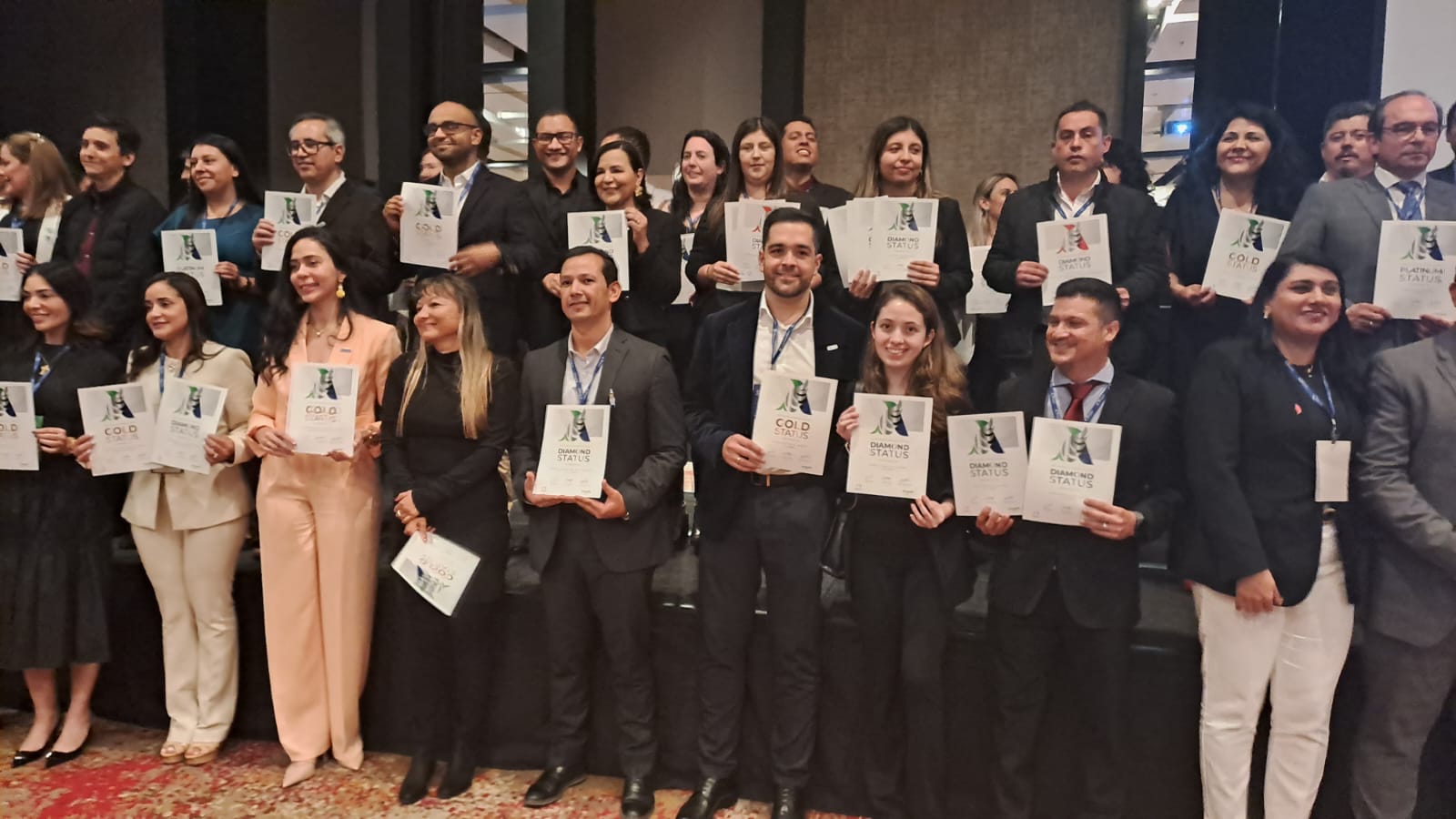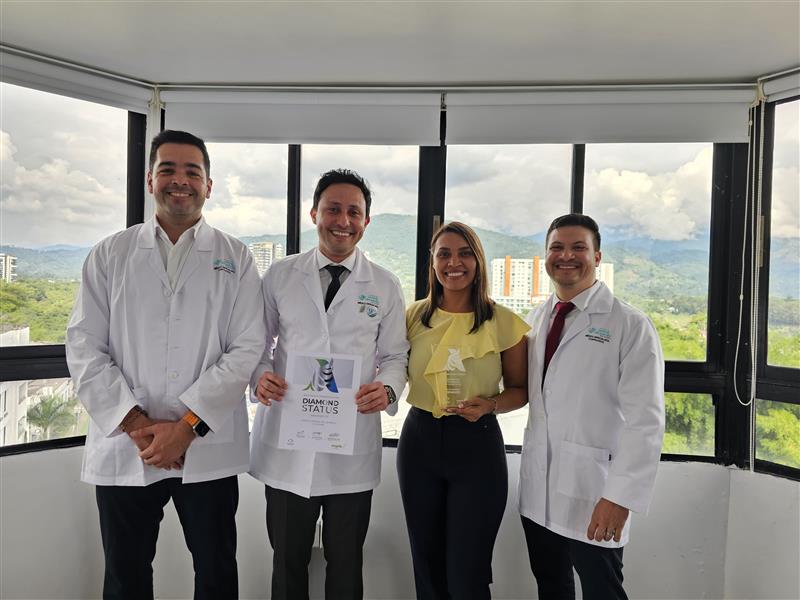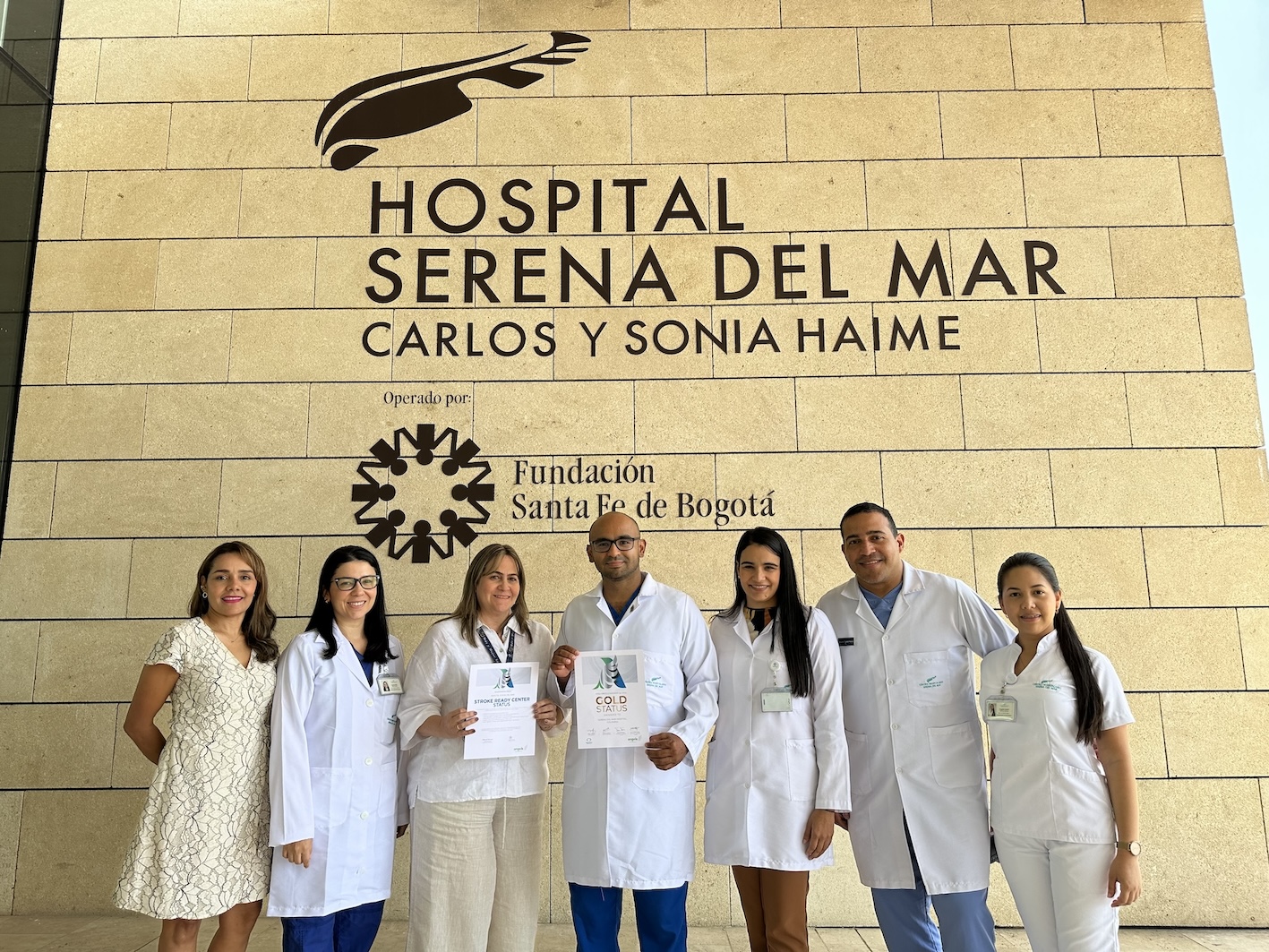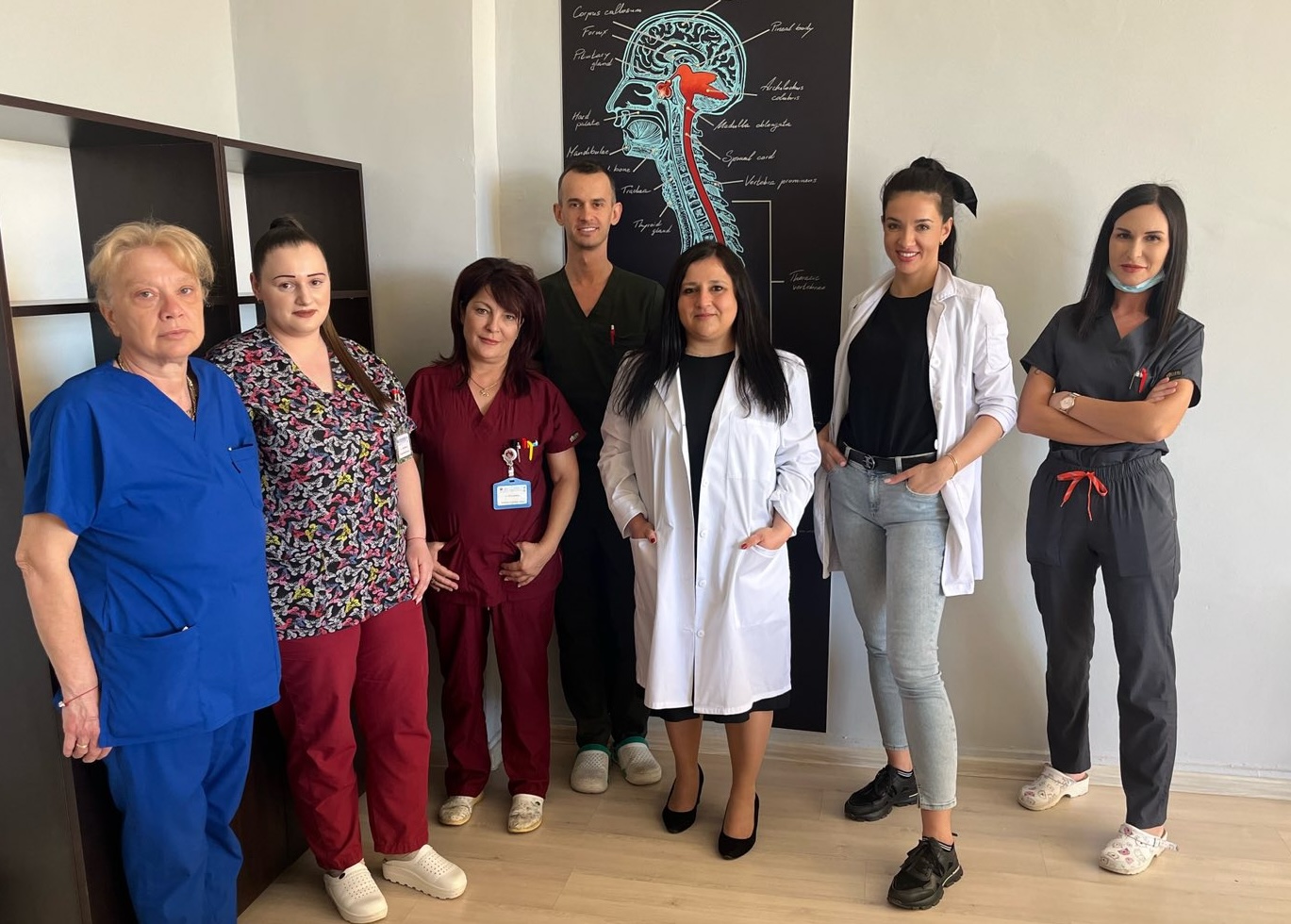
Pada Q3 tahun 2023, setelah mengobati 67,7 persen stroke dalam waktu kurang dari 60 menit dan telah meningkatkan tingkat rekanalisasinya menjadi 26,8 persen, UMHAT Prof Dr Stoyan Kirkovich, sebuah rumah sakit universitas yang berlokasi di Stara Zagora, memenangkan ESO Angels Gold Award pertamanya. Untuk menceritakan kisah mereka adalah:
Dr Teodora Manolova-Mancheva, kepala departemen neurologi.
Dr Hristo Dimitrov, seorang dokter medis di Pusat Pengobatan & Kecelakaan Darurat.
Prof. Yovcho Yovchev, direktur rumah sakit.
Dr. Bozhidar Petrov, kepala bedah saraf.
Drs Yordanka Argirova, Georgi Georgiev dan Kristiyan Naydenov, dokter neurologi.
Saya Berubah dan mengandalkan satu sama lain
Dr Teodora Manolova-Mancheva: Trombolisis pertama yang saya lakukan adalah selama periode yang sangat emosional bagi saya. Kepala departemen kami [Profesor Ivan Manchev] baru saja meninggal setelah terkena stroke sendiri. Saya baru saja kembali setelah berkabung saat kami menerima seorang wanita lanjut usia yang mengalami stroke. Keluarganya, yang berprofesi sebagai ahli medis, mengenali gejala tersebut dan membawanya ke rumah sakit hanya 12 menit setelah onset. Saya bertugas bersama trainee saya, Dr Georgi Georgiev. Kami mendorongnya ke pemindai CT sendiri tanpa menunggu portir; kami menyiapkan rtPA sendiri dan memberikan perawatan. Stroke yang parah, tetapi untungnya ia sembuh.
Kami mulai mengobati stroke akut dengan trombolisis pada tahun 2019. Ada upaya sebelumnya tetapi karena perubahan organisasi dan merger rumah sakit, berbagai hal tidak berjalan. Pada tahun 2019, setelah pelatihan Angels, kami memulai upaya yang tepat namun hati-hati.
Setelah kerja sama kami dengan Angels dilanjutkan pada bulan Juli 2023, kami mengevaluasi semua elemen dan departemen yang terlibat dalam proses tersebut. Kami menemukan tindakan prioritas, melakukan simulasi dan pelatihan, serta meningkatkan perawatan pasien kami dalam fase pascaakut. Kami juga mengadakan pertemuan untuk menganalisis kasus yang belum berjalan dengan baik, dan kami membahas protokol nasional kami. Pedoman ini lebih membatasi dibandingkan pedoman internasional yang lebih baru dalam hal kontraindikasi, sehingga pada kenyataannya kita memiliki lebih banyak pasien yang terindikasi daripada yang diperkirakan oleh protokol nasional.
Tujuan kami adalah mendukung setiap dokter dengan memberikan bantuan waktu nyata saat mereka aktif merawat pasien stroke. Target kami adalah mengurangi waktu sebanyak mungkin.
Satu langkah signifikan adalah menerapkan pola pikir kita dan memperlakukan pasien stroke sebagai prioritas. Kita mengadopsi pendekatan yang harus kita cari alasan untuk diobati, bukan alasan untuk tidak melakukannya. Sedikit demi sedikit mentalitas ini terus bertahan.
Tindakan prioritas terbesar kami adalah mengimplementasikan nomor telepon untuk pranotifikasi sehingga ahli neurologi dapat langsung pergi ke unit gawat darurat (UGD) ketika pasien stroke sedang menuju ke sana. Kita telah mengalami kasus saat pasien benar-benar melewati ED. Berkat nomor telepon ini, kami langsung menuju ke ruang CT rumah sakit dan dapat memulai perawatan dalam 10 menit.
Dr Hristo Dimitrov: Saya tidak dapat mengatakan bahwa sebelum Juli 2023 pasien stroke diabaikan oleh tim EMS, tetapi setelah pelatihan kolektif dengan staf rumah sakit, pasien dengan gejala yang menunjukkan bahwa stroke benar-benar diobati lebih cepat. Ini adalah hasil pelatihan dan diskusi selanjutnya tentang praktik, logistik, dan berbagi hasil dari upaya kolektif kita. Tidak diragukan lagi bahwakolaborasi dengan rekan kerja kita dari UGD dan klinik neurologi menghasilkan perawatan medis yang lebih tepat waktu dan berkualitas lebih baik. Hal ini tentu saja membantu mengurangi kemungkinan disabilitas pasien.
Jalur sekarang dimulai dengan panggilan telepon dari tim EMS di lokasi ke ahli neurologi yang bertugas. Selama panggilan telepon ini, kami melaporkan gejala, waktu onset, tanda-tanda vital, informasi lain tentang pasien, dan perkiraan waktu kami akan tiba di UGD. Kami telah membangun saluran komunikasi yang baik antara EMS dan rumah sakit, yang merupakan aspek penting dari hubungan ini.
Dr. Manolova:Menetapkan hubungan ini tidaklah mudah dan prosesnya masih berlangsung. Penting untuk secara aktif mencari kolaborasi dan mengomunikasikan betapa pentingnya mengangkut pasien dalam jendela terapeutik, dan bagaimana riwayat medis yang ringkas bersama dengan panggilan telepon meningkatkan hasil klinis pasien. Mengenai pranotifikasi dan mengidentifikasi pasien yang sesuai untuk perawatan, kami melihat peningkatan dalam keterlibatan personel EMS. Kita semakin mengandalkan mereka dan karenanya kita telah meningkatkan hasil kita.
Prof. Yovcho Yovchev:Kolaborasi antara divisi subregional EMS dan rumah sakit sangat penting untuk perawatan kasus darurat secara tepat waktu dan memadai. Menurut standar nasional untuk pengobatan darurat, setiap pasien dalam kondisi kritis harus dibawa ke rumah sakit terdekat, tergantung pada tingkat kompetensi rumah sakit. Rumah sakit kami memiliki tingkat kompetensi dan jumlah staf tertinggi di wilayah tersebut. Meskipun demikian, kami telah menyaksikan transportasi pasien dalam apa yang disebut “jam emas”, dengan diagnosis yang mengusulkan resusitasi darurat dan metode terapeutik, ke rumah sakit yang tidak memiliki kemampuan diagnostik yang diperlukan untuk menilai tingkat keadaan darurat dengan tepat. Masalah ini sudah ada selama bertahun-tahun, dan menyebabkan hilangnya waktu yang sangat penting bagi pasien.
Namun, dalam beberapa bulan terakhir kami telah mengamati kecenderungan untuk sinkronisasi yang lebih baik antara tim EMS dan UGD kami. Saya berharap bahwa memastikan diagnosis yang memadai dan tepat waktu untuk perspektif pengobatan yang lebih baik akan terus menjadi faktor pendorong utama untuk pekerjaan staf EMS.
Dr. Dimitrov: Memberikan umpan balik rutin kepada staf EMS, terutama jika hasil pasien positif, akan lebih lanjut menstimulasi mereka untuk melakukan pekerjaan dengan baik. Kita pasti akan mendapatkan manfaat dari pertemuan rutin dengan staf rumah sakit sehingga kita dapat mengatasi hambatan dan kesalahan lebih lanjut.
Dr Bozhidar Petrov:Beberapa perubahan paling berdampak yang kami amati setelah Juli 2023 adalah peningkatan kompetensi, motivasi, dan komunikasi antartim, serta penyatuan banyak departemen untuk bekerja secara sinkron demi kepentingan pasien.Tanpa keraguan, peningkatan kerja sama antara rumah sakit dan EMS ini juga akan menguntungkan pasien lain.
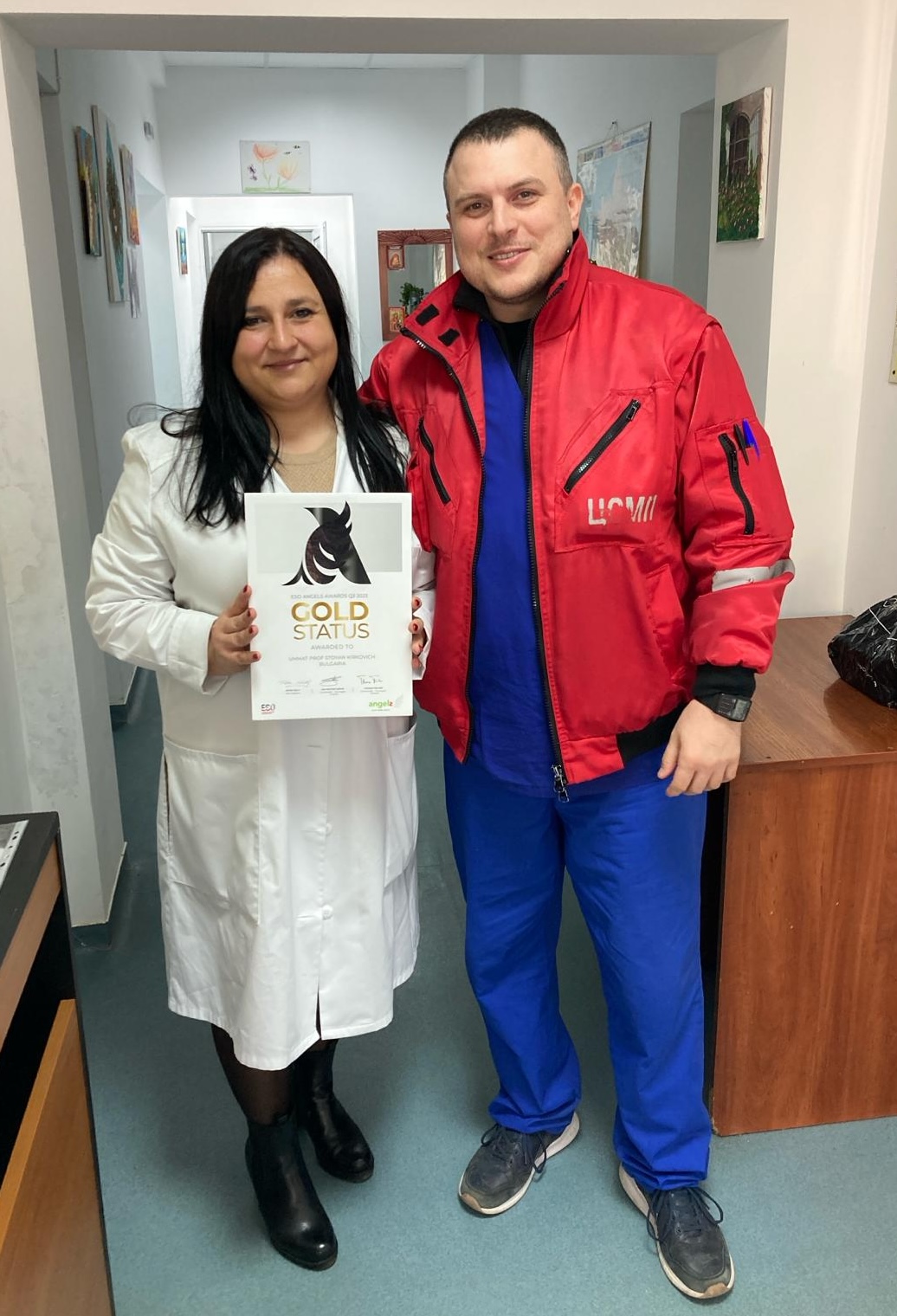
II Dari keluarga, pasien pertama, dan neurologi sebagai seni
Dr. Dimitrov:Saya memilih profesi ini karena Anda merasakan hal ini saat Anda melihat hasil dari membantu pasien. Saya ingat pasien pertama setelah kami memulai pekerjaan khusus kami dengan pasien stroke. Wanita tersebut berusia sekitar 80 tahun dengan afasia motorik, setelah itu ia juga mengalami hemiparesis. Saya melakukan pemeriksaan medis secepat mungkin, kemudian memberi tahu dokter neurologi yang sedang menunggu pasien di UGD. Pasien kemudian segera dipindai dan diobati. Hasilnya adalah saat ini pasien ini tidak memiliki disabilitas dan telah pulih sepenuhnya dari gejalanya.
Dr. Georgi Georgiev:Pasien pertama yang harus saya diagnosis dengan stroke dan bertanggung jawab atas hal tersebut adalah kakek saya – ia pernah mengalami stroke iskemik. Saat itu saya masih mahasiswa kedokteran, di tahun keempat.
Dua guru yang luar biasa membantu saya menemukan diri saya dan jalan hidup saya. Yang pertama adalah guru kimia saya, yang dengannya saya memahami subjek tersebut dan jatuh cinta, dan yang juga mengajari saya untuk percaya pada diri sendiri. Yang lainnya adalahProf Manchev, pada saat itu direktur klinik neurologi dan profesor neurologi saya di universitas.Saya ingat kuliahnya sampai hari ini.
Setelah saya menyelesaikan ujian, dia mengundang saya untuk berpartisipasi dalam putaran rumah sakitnya. Saya terpikat oleh udaranya, pemeriksaan kesehatannya, diskusinya tentang kasus pasien, dan perilaku umumnya. Melalui dia, saya melihat obat-obatan, dan khususnya neurologi, sebagai suatu seni.
Dr Manolova: Neurologi bagi saya adalah salah satu disiplin medis yang paling menarik – memiliki jangkauan yang luas, penuh warna, intensif, logis, memerlukan penelitian terperinci tentang masalah pasien tetapi secara paradoks hal ini juga memerlukan intervensi cepat.
Lebih dari 50 persen pasien dalam neurologi tidak pernah benar-benar sembuh dari penyakit mereka, tetapi trombolisis sebaliknya adalah salah satu dari sedikit pengobatan yang pasti membuat pasien lebih baik.
Prof Manchev, Acad Ivan Milanov, dan Prof Rossen Kalpachki semuanya telah memengaruhi karier saya. Prof Manchev adalah mentor saya dan mengajarkan segalanya kepada saya.Menurut saya, tidak ada seorang pun di Bulgaria yang mengetahui detail halus dari setiap aspek neurologi seperti Acad Milanov. Dan Prof. Kalpachki menunjukkan kepada saya cara yang tepat untuk mengobati pasien saya secara efektif, dan saya tahu dia tidak akan pernah menolak untuk membantu saya.
Dr Bozhidar Petrov:Seorang pemimpin perlu memberikan contoh pribadi, mereka kompeten, bertanggung jawab, bekerja keras, responsif, dan mencurahkan segenap hati dalam pekerjaan mereka. Dr. Manolova adalah orang seperti ini.
Dr. Manolova: Tujuan saya tidak pernah tercapai untuk menjadi kepala departemen. Saya tidak menyukai konflik, juga tidak suka menjadi pusat perhatian dan tanggung jawab. Namun berbagai hal berubah dan setelah saya menerima perawatan stroke sebagai misi dan prioritas pribadi, saya mulai menghargai posisi ini. Saya berjuang untuk pasien saya setiap hari. Fakta bahwa salah satu mentor saya meninggalkan dunia ini karena stroke memotivasi saya. Saya ingat hal itu terjadi tepat di depan mata saya dan tidak berdaya untuk membantunya. Saya hanya bisa melihat saat dia terserang stroke dan kemudian mengalami koma. Sekarang saya sedang mengembangkan diri dan berusaha semaksimal mungkin untuk memberikan kesempatan kepada orang lain untuk mendapatkan pengobatan.
Dr Yordanka Argirova: Nenek saya menderita Alzheimer, yang lainnya menderita perdarahan otak, dan ayah saya menderita stroke. Jadi saya tahu seperti apa rasanya merawat pasien dengan kondisi neurologis serius. Sekalipun Anda tidak dapat melakukan apa pun bagi pasien, bagian penting dari peran dokter adalah empati. Di Bulgaria, hal ini masih belum banyak dibahas, tetapi dari perspektif saya jika Anda tidak dapat berempati dengan pasien, Anda tidak boleh menjadi dokter. Saya selalu ingin menjalani profesi ini dan sangat senang bahwa saya telah memenuhi mimpi saya.
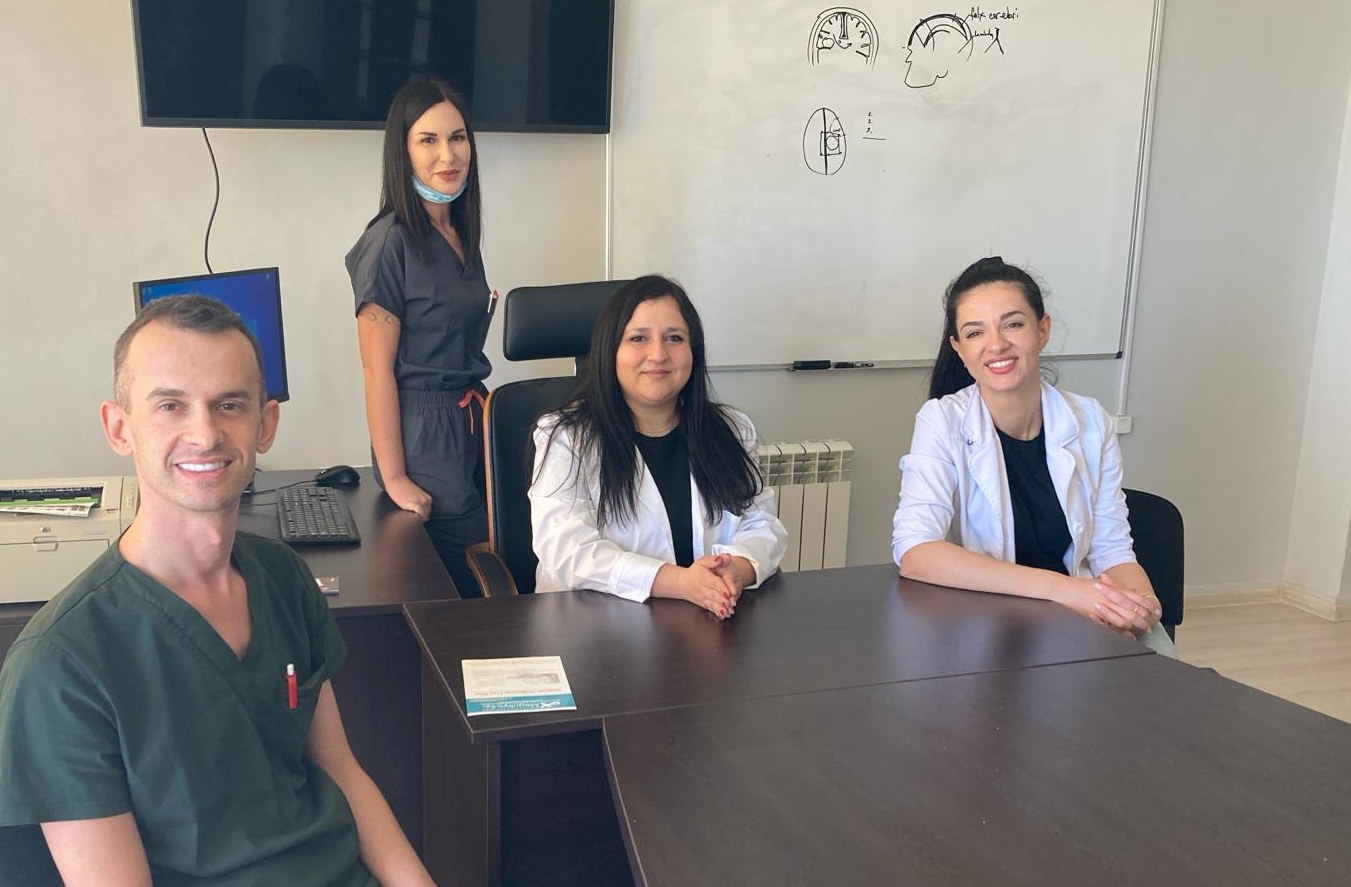
III Momen Bangga dan dunia sempurna
Dr Manolova: Misi setiap medis adalah membantu pasien mereka. Kita semua adalah neurolog darurat sehingga kita mengetahui hasilnya, baik jangka pendek maupun jangka panjang. Ada perawatan untuk stroke, yang telah ditetapkan lebih dari 20 tahun yang lalu. Kita tidak dapat membiarkan apa pun menghentikan kita, bahkan keraguan kita sendiri, karena pasien tidak akan membaik dengan sendirinya. Hasilnya akan memengaruhi pasien dan keluarga mereka sepanjang hidup mereka. Ketika pasien berada di gurney di depan Anda, benar-benar tidak berdaya, ini adalah satu-satunya hal yang harus Anda pikirkan.
Sangat penting untuk mendidik dan mendukung dokter yang lebih muda untuk pertumbuhan mereka sendiri dan masa depan disiplin ilmu ini. Kita harus berinvestasi pada generasi muda, berbagi pengalaman berharga kita dengan mereka, agar mereka berada di jalan menuju pengembangan diri, sehingga mereka memiliki kepercayaan diri untuk merangkul inovasi dalam neurologi kontemporer.
Mereka juga harus menerima bahwa kesalahan adalah bagian dari permainan. Hanya dia yang tidak bekerja yang tidak membuat kesalahan. Anda hanya perlu belajar dari tindakan Anda dan melangkah maju. Inilah yang saya ajarkan kepada penduduk saya.
Dr Georgiev: Pekerjaan saya di klinik ini tentu saja berdampak pada pengembangan profesional saya, tetapi juga membantu saya mendapatkan apresiasi yang lebih besar terhadap kehidupan itu sendiri – tentang apa yang benar-benar penting.
Dr Argirova: Secara profesional, saya mendapatkan banyak pengalaman. Saya membuat keputusan dengan cepat dan percaya diri; saya tahu bahwa tidak ada pilihan lain dan saya harus melakukan yang terbaik untuk pasien. Saya merasakan efek yang sama pada kehidupan pribadi saya.
Dr. Manolova:Menerima ESO Angels Award tentu merupakan momen yang membanggakan. Sungguh mengejutkan, kami tidak mengharapkannya. Namun momen-momen yang membanggakan terjadi hampir setiap hari ketika saya melihat bagaimana rekan-rekan saya memperlakukan pasien dengan stroke. Saya aktif terlibat dalam pekerjaan mereka dan setiap hari mereka membuat saya bangga. Saya bangga dengan Dr Argirova saat dia menyelamatkan nyawa seorang pria muda berusia 36 tahun. Saya bangga dengan Dr Naydenov yang berhasil memberikan rtPA kepada pasien dalam waktu 10 menit sejak mereka tiba.
Dr Kristiyan Naydenov: Berkat Prof Manchev saya tiba di klinik ini. Dia memperhatikan saya sebagai siswa, menunjukkan minat saya, dan mendorong saya.
Saya memilih untuk belajar kedokteran karena saya sedang mencari profesi intelektual yang murni. Neurologi adalah cinta pada pandangan pertama dan masih. Kita berada di tahun ke-10 asmara kita, yang merupakan tahun penting dalam hubungan jangka panjang.
Secara profesional, pengalaman di klinik ini mengawali perkembangan saya. Saya membangun berdasarkan pengetahuan dan pengalaman saya setiap hari. Namun, hal itu telah berdampak buruk pada kehidupan pribadi saya – pekerjaan ini sangat menegangkan, dan kami membawanya pulang. Tanggung jawab berat yang kita emban selalu membebani pikiran saya.
Saya juga telah mempelajari bahwa pengetahuan umum tentang kesehatan masyarakat terlalu rendah, prioritas pasien diatur secara salah, dan tingkat pendidikan umum mereka memiliki korelasi langsung dengan apa yang mereka lakukan untuk menjaga kesehatan mereka. Saya belajar bahwa Anda harus memiliki banyak kualitas pribadi yang baik untuk menjadi neurolog yang sukses dan melakukan volume pekerjaan yang diperlukan dengan standar tinggi yang diperlukan.
Dr. Dimitrov: Dari perspektif EMS, tantangan kita yang tersisa ada dua. Pertama adalah masyarakat umum dan kebutuhan mendesak akan kampanye kesadaran seperti FAST Heroes di sekolah, tetapi juga bagi orang dewasa untuk mempelajari cara mengenali gejala stroke dan segera menghubungi 112. Kedua adalah meningkatkan kesadaran dan kualifikasi rekan kerja EMS kita melalui pelatihan teori dan praktik bersama dengan rekan kerja rumah sakit kita.
Dr Manolova: Di dunia yang sempurna, saya akan mengubah motivasi yang dimiliki neurolog untuk mengobati stroke. Saya akan mengatur ulang prioritas mereka agar mereka lebih terlibat dalam intervensi stroke tepat waktu.
Dr Kristiyan Naydenov: Saya memimpikan sebuah realitas di mana untuk setiap dokter ada dua perawat dan empat portir, sebagaimana ditetapkan dalam standar hukum nasional. Namun, kita menyadari bahwa kita harus mengandalkan diri sendiri. Seluruh tim kami bekerja untuk mengatasi semua masalah yang kami bisa melalui pendidikan kader baru dan melalui penjangkauan publik. Motivasi kita adalah tim tempat kita berada.

